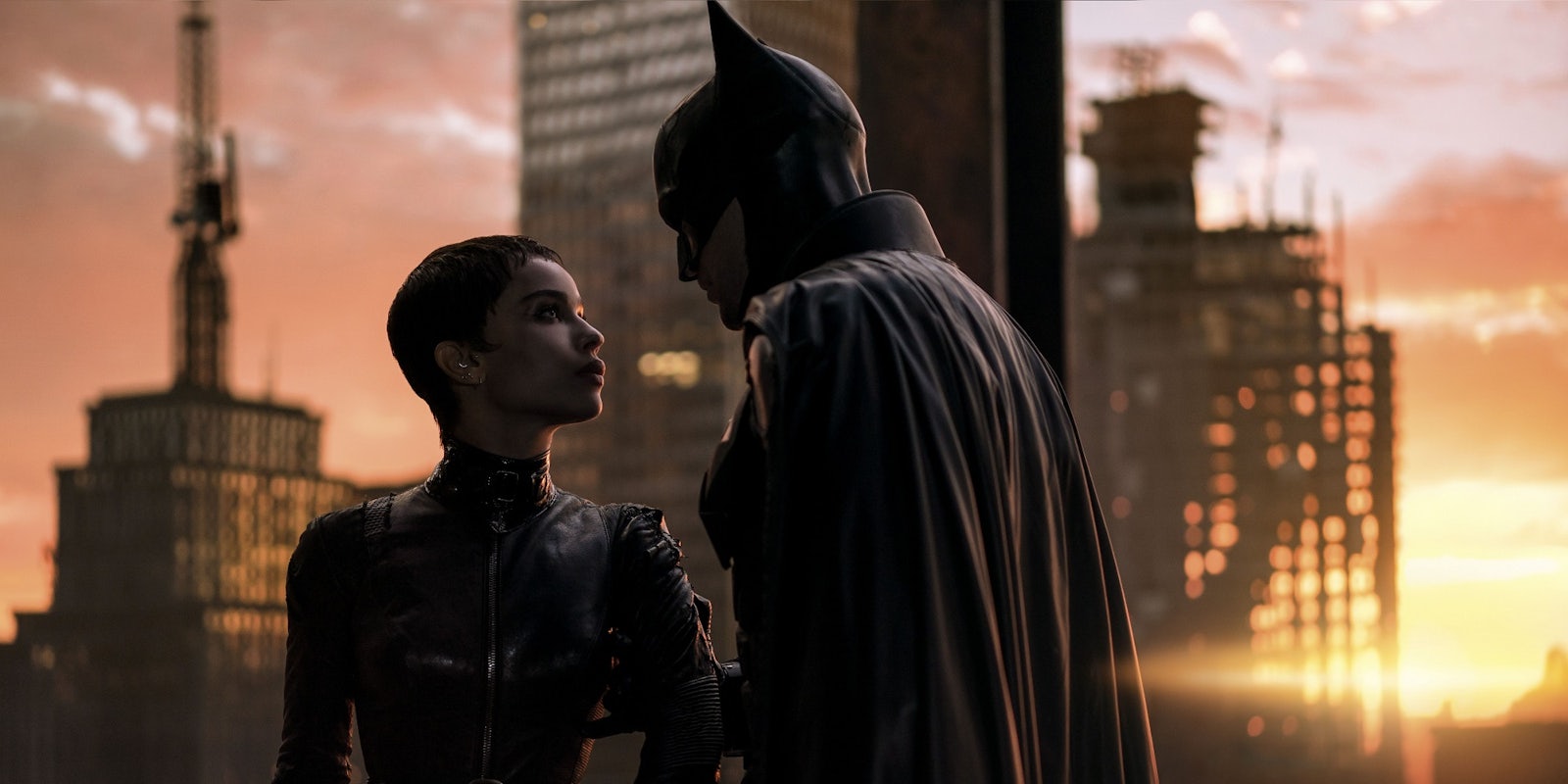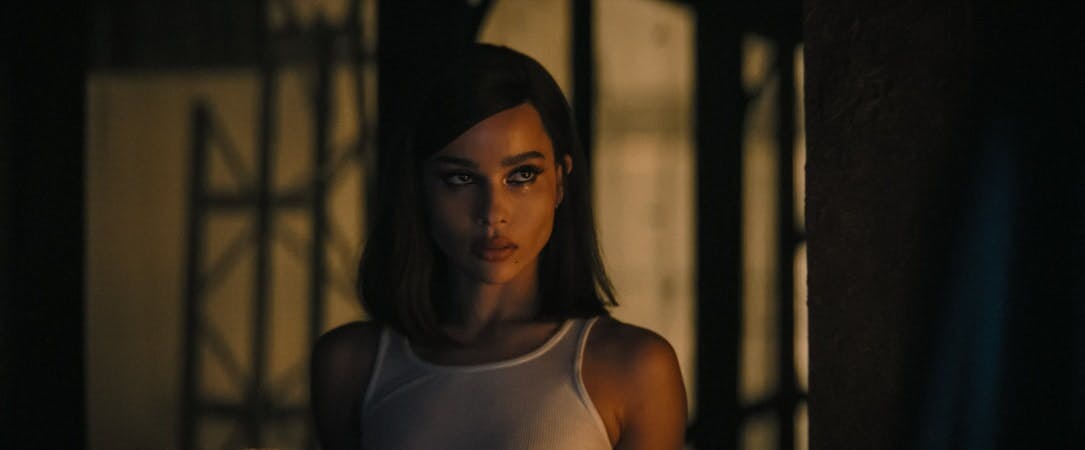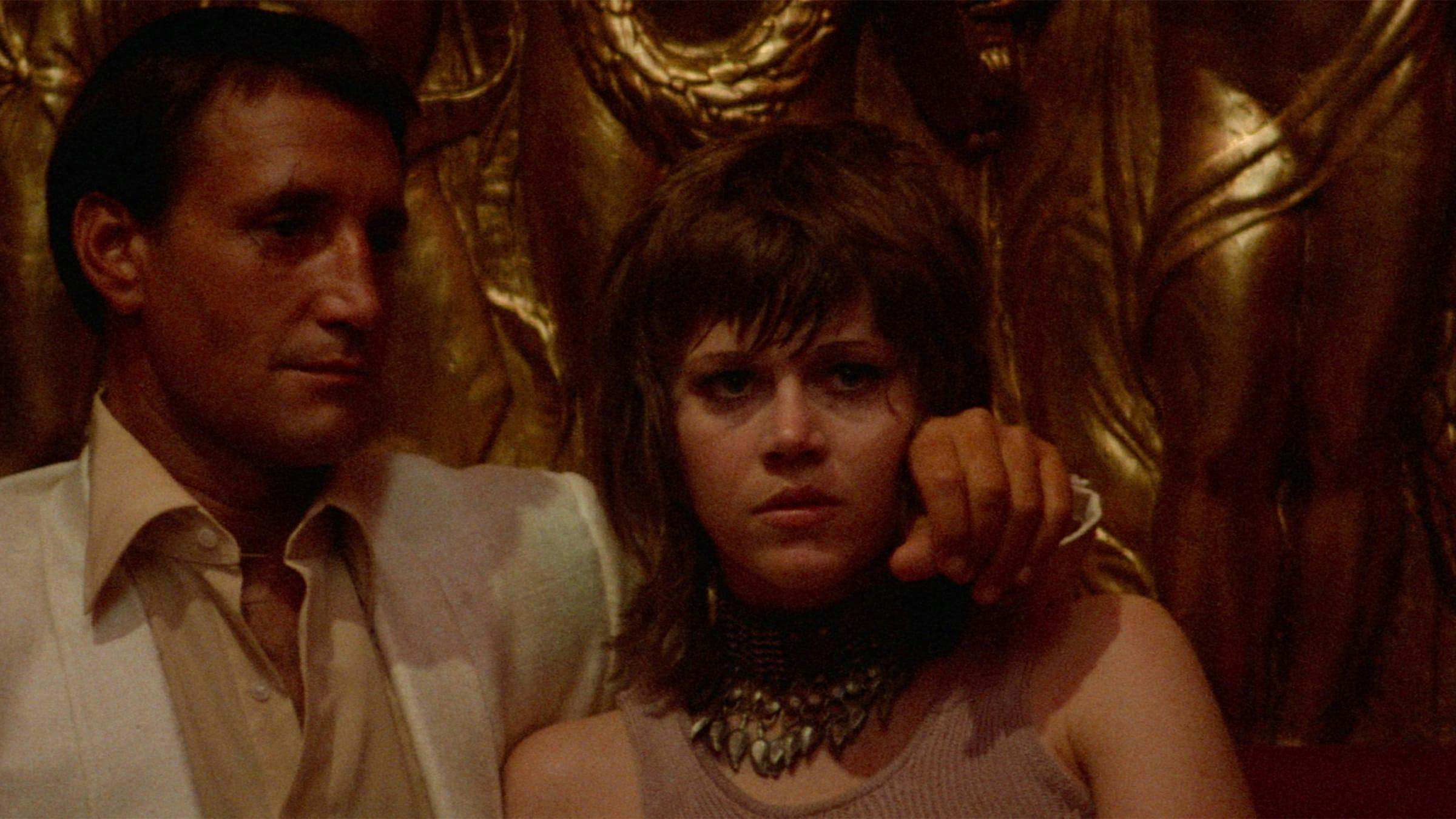This post includes spoilers for The Batman.
Introducing Bruce Wayne during the second year of his crime-fighting career, The Batman focuses on his skills as a detective. Investigating a series of murders, he offers sharp observations that immediately outshine Gotham’s CSI team. But despite his determination and intellectual acuity, he has an obvious weakness from the start: social skills.
While previous big-screen Batman adaptations depict Bruce with three distinct personas—public, private, and Batman—The Batman offers only two. Robert Pattinson‘s Bruce Wayne is an awkward, depressed recluse. Not just unwilling to participate in Gotham society, but emotionally unable to do so. Refusing to take an active role in Wayne Enterprises, he focuses all his energy on his vigilante career. This sets up an intriguing riff on the “inexperienced young superhero” trope.
In detective-centric Batman stories, he’s typically portrayed as a keen student of human nature, utilizing undercover personas like Matches Malone. Batman may not be good at handling his own feelings, but he displays exceptional social awareness when it comes to criminal deduction. The Batman’s Bruce Wayne never developed that skillset, something that becomes very obvious during his interactions with Catwoman.
The Batman takes aim at the male gaze
One of The Batman’s most interesting sequences is also its most frustrating. In order to infiltrate a nightclub frequented by Gotham’s criminal elite, Bruce gives Selina Kyle/Catwoman (Zoë Kravitz) a contact lens camera, allowing him (and us) to see the world from her perspective. He gets a firsthand view of sleazy men watching Selina as she walks past—a queasy twist on an earlier scene where Bruce surveilled Selina through her bedroom window.
Bruce comes across as astonishingly naive in this nightclub scene; a privileged young man who has never considered the world from a woman’s perspective. In order to carry out her mission, Selina has to make direct eye contact with her targets so Bruce can identify them with facial recognition software. She’s vulnerable and exposed in a way that Batman rarely is.
Ignoring Selina’s discomfort, Bruce pressures her to catch the eye of the corrupt district attorney. He’s an easy mark. Selina effortlessly switches to vacuous flirtation, and the D.A. spills his guts.
This scene comes to a head when Selina bumps into the mob boss Carmine Falcone (John Turturro). They clearly know each other, and Bruce is disgusted. But while Bruce automatically assumes that she’s in with the mob, it’s obvious to us that something more complicated and sinister is afoot. Selina’s smooth, flirty persona is gone, replaced with palpable anxiety as Falcone touches her face and purrs, “Don’t be a stranger.”
“You didn’t tell me you had a relationship with him,” Bruce growls. She denies it, tearing out her contact lenses and ending their connection. The next time they meet, Bruce is aggressively judgemental, shaming Selina for what he assumes is a sexual, transactional relationship with Falcone. “Your choices have consequences,” he says, implying that her friend Annika might still be alive if she (and Selina) had avoided Falcone and his associates.
“Whoever you are, you obviously grew up rich,” Selina says bitterly, and Bruce hits back with an accusation that she “compromised herself for money.”
Not only did Bruce fail to pick up on Selina’s obvious discomfort with Falcone, but he naturally gravitates toward a sexist, unsympathetic conclusion. He implicitly accuses Selina of having sex with Falcone (and maybe the Penguin) for financial gain, something unequivocally Bad in his eyes. Ironically, Bruce has no idea where his own wealth comes from. He habitually refuses to attend Wayne Enterprises board meetings, planning to spend his fortune on Batman supplies until he runs out of money.
The movie concludes with damning evidence of Bruce’s hypocrisy: The discovery that Gotham’s criminal underworld is funded by people embezzling Thomas and Martha Wayne’s urban redevelopment plan. So even if Selina had slept with Falcone, that’s a drop in the ocean compared to the damage done by wealthy men like Bruce. It’s a far more sophisticated view of Bruce’s wealth and privilege than we’ve seen in previous Batman movies, sabotaged somewhat by what happens next in that Bruce/Selina confrontation scene. While we’re expecting Selina to reveal that Falcone was harassing her (or something similar), there’s a twist: Falcone is actually her estranged father, and she was working at the club in order to bring him down.
The problem with Annika
This revelation is frustrating for a couple of reasons. First off, it deprioritizes the importance of Selina’s relationship with Annika, her friend/roommate who goes missing near the start of the movie. At first, Annika is Selina’s primary motivation for joining forces with Batman. But once we learn that Falcone is Selina’s father, the film basically forgets Annika and focuses its attention on him.
The confrontation scene also defangs the ethical conflict between Bruce and Selina. As Selina points out, Bruce always thinks the worst of people. He was already in the wrong here, judging Selina for a perceived moral failing that he clearly didn’t understand. But by revealing that Falcone is Selina’s father, the film avoids taking this confrontation to its natural conclusion. Bruce is excused from examining his sexist biases, and the film doesn’t have to engage with a more complicated conversation about sex work, harassment, and consent.
Two minutes later, Bruce and Selina are kissing—a turnaround that strains credulity, relying heavily on Zoë Kravitz’s magnetic screen presence. It works best if we view it through the headspace of the noir genre, where a kiss isn’t necessarily a declaration of romantic intent. It’s more about sexual chemistry, with ambiguous motives lurking underneath. Does Selina really forgive Bruce so quickly? Is she seducing him to cement their alliance? Does she consciously set aside her doubts because he’s hot and intriguing? You decide.
As Kravitz has mentioned, there’s an implication that Annika was Selina’s girlfriend. But despite Selina literally saying she has a duty to find Annika’s killers because Gotham only cares about “white privileged assholes,” her narrative arc tells another story. Once Annika’s body has been found, her role is complete. The really important figure here is Falcone. A familiar riff on Hollwood’s two favorite motivators: a beautiful, dead woman (conveniently offscreen), and a problematic dad. All the powerful characters in The Batman are white men, something the script presents as social commentary while reinforcing the most tired and conservative frameworks for this kind of film.
Catwoman and Klute
Matt Reeves cited several 1970s thrillers as inspiration for The Batman: Taxi Driver, The French Connection, All the President’s Men—and in the case of Bruce and Selina’s relationship, Klute.
Released at the start of a 1970s trend for tense, surveillance-focused thrillers, Klute stars Jane Fonda as Bree, a sex worker who is being stalked by a former client. Donald Sutherland plays the title character John Klute, a detective searching for a missing man. His investigation leads him to Bree, and the two become lovers; a conflicted relationship due to their differing worldviews. The parallels to The Batman are obvious: The contrast between Bree’s street-smart attitude and Klute’s paternalistic naivety, and the theme of men surveilling and attempting to control an independent young woman.
As is always the case when blockbusters reference classic movies, The Batman is nowhere near as clever as Klute. The current Hollywood landscape is too prudish to offer Klute’s clear-eyed view of sex. Instead of confronting Bruce’s misconceptions about Selina’s sex life, the film swerves at the last minute, reframing the situation as a fake-out. And while Bruce and Selina have more chemistry than many superhero couples, The Batman keeps things pretty tame. Kravitz and Pattinson’s promotional photoshoots are raunchier than anything we see onscreen, paling in comparison to the kinky energy displayed by Michelle Pfeiffer and Michael Keaton in Batman Returns.
The Batman’s vision for Bruce Wayne is more subtle than we’ve come to expect. Robert Pattinson’s performance is terse and downbeat; less macho than Affleck or Bale, but (disappointingly!) less weird than we might expect. Skipping the old formula of an origin story, Bruce’s arc feels appropriate for a character in his late twenties or early thirties. A guy who has figured out what he wants to do in life, but hasn’t come to terms with his own blindspots—especially the biases that stem from his privileged background.




